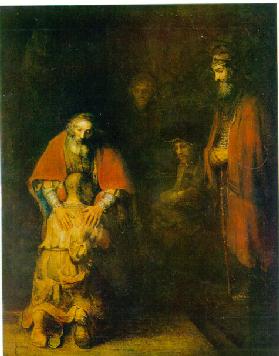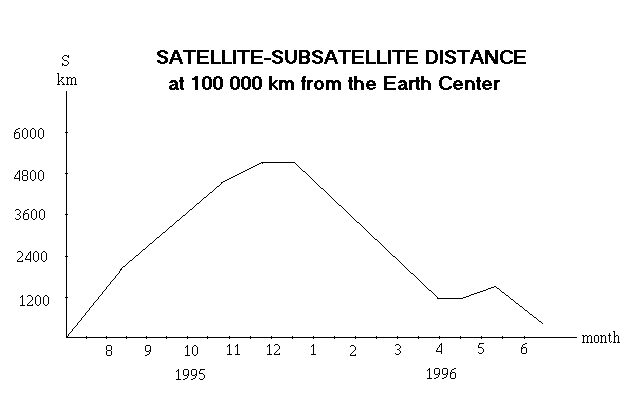 The Prodigel son is mentioned in Bible. It is a story about the son
which left his father in order to live in revelry. As a result he fell
in poverty so deep that he was forced to eat what was uneaten by pigs.
The Prodigel son is mentioned in Bible. It is a story about the son
which left his father in order to live in revelry. As a result he fell
in poverty so deep that he was forced to eat what was uneaten by pigs.
From: NATAN EISMONT
July 26, 1996
Boomerang - a flat, curved piece of wood that can be thrown so that it
returns to the thrower.
 The Prodigel son is mentioned in Bible. It is a story about the son
which left his father in order to live in revelry. As a result he fell
in poverty so deep that he was forced to eat what was uneaten by pigs.
The Prodigel son is mentioned in Bible. It is a story about the son
which left his father in order to live in revelry. As a result he fell
in poverty so deep that he was forced to eat what was uneaten by pigs.
But then repertant he returned to his father.
MAGION subsatellite can be considered as space boomerang being thrown from the main spacecraft and now returning back. But some experimentors use to consider this homecoming of the subsatellite like the Return of the Prodigel Son. For them the small distances (less then 200 km) between the S/c are needed in order to fulfill coordinated measurements when the s/c are in solar wind and cross the bowshock of the magnetosphere.
The other part of the experimentors team preferred to do measurements on both s/c having the distances between them of several thousand km when crossing the magnetotail of the magnetosphere. This phase of the mission has been executed during fall and winter, when decision has been admitted to return the subsatellite into vicinity of the main s/c.
As it was described earlier to reach this goal the orbital maneuver has been done.
Initial divergence of the s/c was caused by the separation impulse which was applied along spin axis of the main s/c in direction opposite to the Sun. And what is more important the projection of the separation impulse onto s/c velocity vector was negative. So the velocity of the the subsatellite after separation became approximately by 0.15 m/s less then the velocity of the main s/c in this point of the orbit.
Contrary to the common sense the subsatellite began to advance with respect to the main s/c in the secular motion. The secular motion is the part of the motion which is proportional to the time. For our case as it was described in the previous note it means that the subsatellite after one orbit came into separation point of the orbit with 53 seconds advance and this advance was raised by the same value with each orbit.
Explanation of this paradox is rather difficult without utilizing some formulas describing the celestial body motion in the central gravitational field.Inspite of well known example of clear explanation of much more sophisticated problems without any formula.This example is famous Stephen Hawking book A Brief History of Time.
The law of energy conservation can be written as V*V/2 - m/R = -m/(2a)
Here :
Besides this part of the relative motion the periodical part also presents.It is mainly a result of variation of the s/c velocity along orbit.To explain this periodical relative motion suppose for a while that the orbits for the both s/c are exactly the same.The only difference in their motion is delay in arriving of the main satellite into the orbit points with respect to the subsatellite.It is quite clear that such delay is to be constant along orbit because in the oppposite case the s/c would pass the same parts of the orbit for the different time.The distance between the s/c along orbit can be calculated as a product of some mean orbital velocity (mean along part of the orbit between s/c) and the time delay.For our orbit immediately after the subsatellite separation the velocity at the perigee was 27 times as much as the velocity in apogee.It means that for comparatively small delay between s/c the distance between them in case of their motion along the same orbit increases by 27 times during motion from apogee to perigee and then when returning to the apogee it decreases again.This ratio diminishes with the time running.It is connected with the orbit evolution under gravitational influence of the Sun and the Moon.This evolution is high enough because the orbit is high elliptical and in the apogee region the gravitational influence of the Sun and the Moon deviates the s/c from the moving along exact ellipse, so that parameters of the orbit are altered such as inclination,ascending node longitude,argument of the perigee latitude and what is the most important the perigee height.
The initial parameters of the orbit have been chosen under demands to guarantee the perigee being higher then 500 km during 5 years. It is possible to achieve if perigee height would increase after the launch s/c into orbit.In our case it has increased from 800 km directly after launch to 9000 km in the middle of May 1996.By the same value the apogee height has decreased.So the ratio between perigee and apogee velocities became 12,25 instead of 27.But for the fixed radial distance of the s/c from the Earth center the velocity value is sustained constant.
For the most of the experimentors the most important points of the orbit are those which are at 100000 km from the Earth center. The s/c orbital velocity at this distance is about 2 km/s for our orbit. Fig. presents approximate distance along orbit between two s/c when the main s/c is at 100000 km from the Earth center.
 Changes the line direction mean orbital maneuvers executions.
The last maneuver executed in June is expected to bring the MAGION s/c
in close vicinity of the main s/c in the middle of July. But now it is expected to happen at July the 20th because
of unpredicted influence of the main s/c attitude control impulses.
Changes the line direction mean orbital maneuvers executions.
The last maneuver executed in June is expected to bring the MAGION s/c
in close vicinity of the main s/c in the middle of July. But now it is expected to happen at July the 20th because
of unpredicted influence of the main s/c attitude control impulses.
All MAGION s/c attitude and orbital control operations have been fulfilled by Pavel Triska team which includes members of staff of Institute of Atmospheric Phisics of Czech Academy of Sciences and Space Research Institute of Russian Academy of Sciences.
 Back to the Interball Home Page
Back to the Interball Home Page